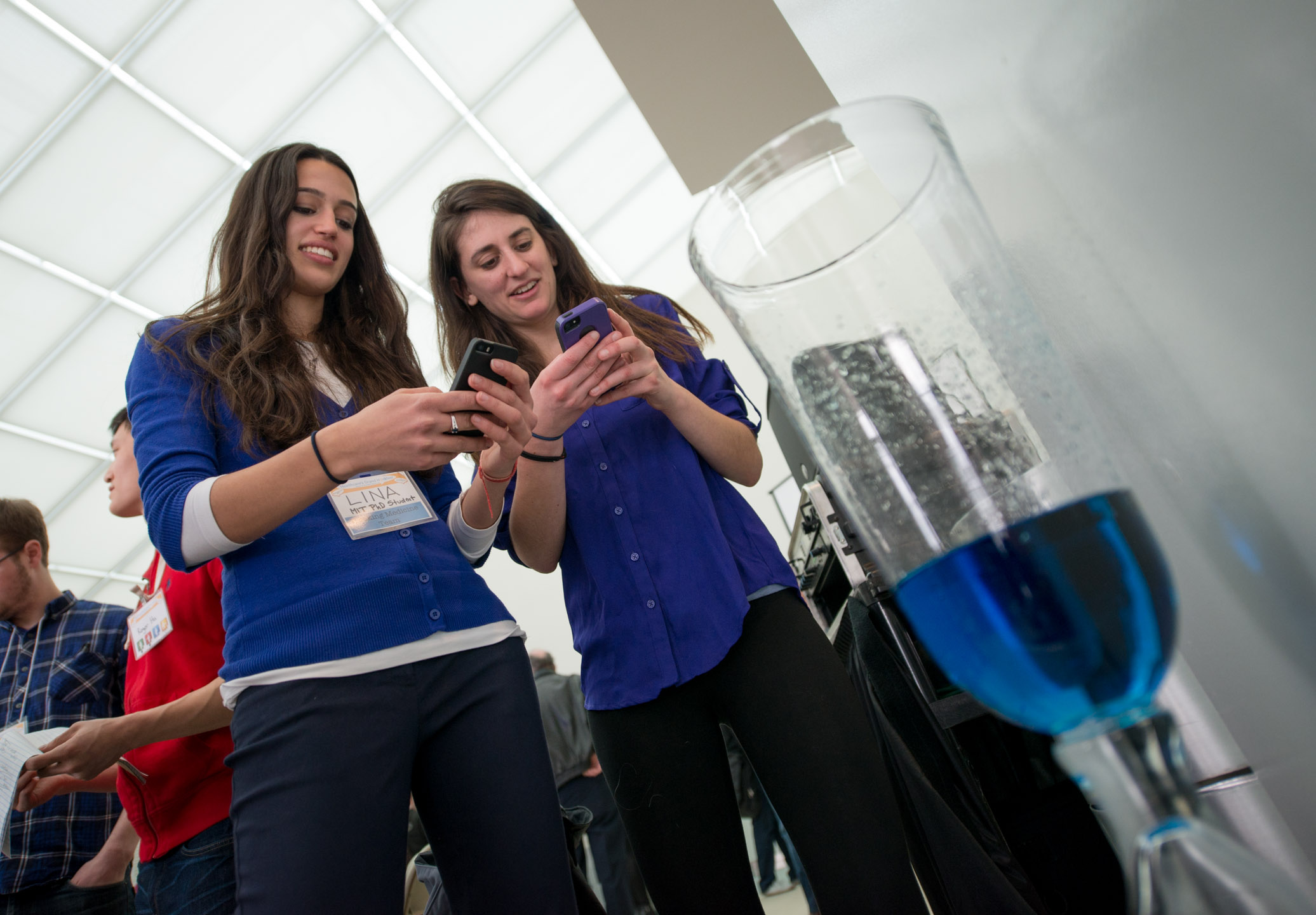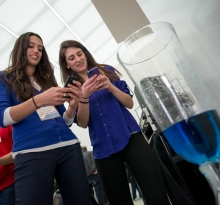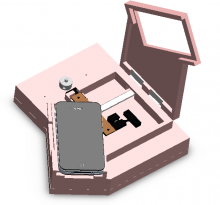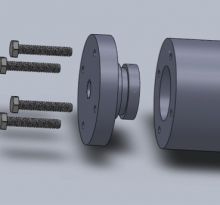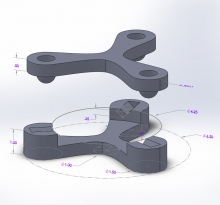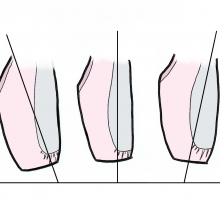Portable MRI machine from MIT is 1000x smaller, faster, and cheaper
My PhD work was published as the cover story of Science Translational Medicine (full paper pdf here).
We developed a portable, non-invasive hydration sensor using magnetic resonance that is 1000x smaller, faster, and cheaper than traditional MRI machines. This work has important applications for patients with kidney disease, heart failure, and dehydration, as well as for the development of new diagnostic technologies.
While over 6M patients in the US suffer from overhydration due to heart failure/kidney disease and 0.5M are admitted to hospitals for dehydration, there are no good methods to measure hydration levels. Doctors can only estimate a patient’s level of hydration by looking at physical symptoms. This guess-work leads to increased morbidity and mortality.
Our magnetic resonance sensor delivers accurate measurements of hydration because the signal comes directly from water molecules. The sensor can take the same quantitative measurements as MRI machines much more cheaply and quickly by skipping the generation of an image (it only outputs a single “pixel”) and using algorithms to make sense of the signal. The device is non-invasive and does not release any ionizing radiation.
Non-imaging MRI sensors have been used in the oil industry – it is how they decide where to drill for oil – and in airport security lines – it’s how they determine whether or not a liquid is an explosive. But no one had yet applied this approach to the human body.
We envision this sensor being used in the doctor’s office, the pharmacy, or eventually, a patient’s own home. If doctors can personalize prescriptions based on a patient’s hydration status, we can increase quality of life and save patients’ lives. The framework we’ve established opens the doors for many more portable, point-of-care MRI diagnostics to be used by doctors in the future.
Multimedia Materials
Download photos/videos and accompanying captions here: Dropbox folder
Here is the full paper pdf: Here
Read this MIT blog post I wrote about what it means to do non-imaging MRI: “What’s an MRI without the I?”
Watch my TEDx talk about this work and the future of imaging: https://www.youtube.com/watch?v=yvRp-h_pihI
Media Coverage
Front-page article of MIT News: http://news.mit.edu/2019/hydration-sensor-dialysis-0724
JAMA News: https://jamanetwork.com/journals/jama/article-abstract/2749580 (Full text here)
AAAS press release: https://www.eurekalert.org/pub_releases/2019-07/aaft-bsb072219.php
Tech Explorist https://www.techexplorist.com/hydration-sensor-could-improve-dialysis/25188/
Nephrology News & Issues https://www.healio.com/nephrology/fluid-management/news/online/%7Bd8c34435-094c-4e41-8eeb-1f739a4cdbed%7D/portable-hydration-sensor-effective-for-fluid-management-of-patients-on-dialysis
AZO Sensors https://www.azosensors.com/news.aspx?newsID=13145
Fierce Electronics https://www.fierceelectronics.com/sensors/hydration-sensor-benefits-dialysis-patients
MedIndia: Health in Focus https://www.medindia.net/news/healthinfocus/new-hydration-sensor-device-improves-dialysis-outcomes-189238-1.htm
MedIndia: Medical Gadgets https://www.medindia.net/news/box-sized-sensor-brings-portable-noninvasive-fluid-monitoring-to-the-bedside-study-189149-1.htm
Medical Xpress https://medicalxpress.com/news/2019-07-noninvasive-device-benefit-patients-kidney.html
NEMO Kennislink (Dutch Popular Science Magazine) https://www.nemokennislink.nl/publicaties/sensor-meet-vochtbalans-aan-bed/
Noticias de la Ciencia (Spanish Science Magazine) https://noticiasdelaciencia.com/art/33750/un-sensor-del-tamano-de-una-caja-lleva-la-monitorizacion-de-fluidos-portatil-y-no-invasiva-a-la-cama-del-paciente
Drug News https://www.drugnews.in/2019/07/29/new-hydration-sensor-device-improves-dialysis-outcomes/
Clear Critique https://clearcritique.com/new-hydration-sensor-device-improves-dialysis-outcomes/
Science & Technology Research News (STRN) https://www.scienceandtechnologyresearchnews.com/hydration-sensor-could-improve-dialysis/
So excited that the paper that is the culmination of my #PhD came out in @ScienceTM today! As the COVER story! Can’t wait to share this 6-yr labor of love with the world. Here are some of the main takeaways from the paper:#BigDay #HealthTech #PortableMRI #HydrationSensor pic.twitter.com/2Xj2EpmNjQ
— Lina Colucci, PhD (@lina_colucci) July 24, 2019
Quotes and Key Points
A Portable, Non-Imaging MRI Sensor
Our Novel Sensor
- We developed a portable magnetic resonance sensor that can be brought to the patient bedside and placed against any part of the body. The measurements are non-invasive, non-destructive and produce no ionizing radiation
The Magnetic Resonance Signal
- Quote: “The beauty of magnetic resonance compared to other modalities for assessing hydration is that the magnetic resonance signal comes exclusively from hydrogen atoms. And most of the hydrogen atoms in the human body are found in water (H20) molecules”
Non-Imaging = Smaller, Cheaper, and Faster
- It is not necessary to generate images in order to take quantitative magnetic resonance (relaxometry) measurements
- Removing the need to generates images makes the hardware simpler, smaller, and cheaper
- Quote: “Even though we do not generate images, we can algorithmically determine what percentage of the signal is coming from which tissue types and fluid spaces”
Not Just Hydration
- Quantitative relaxometry biomarkers measured via MRI already have several important diagnostic use cases, such as diagnosing iron overload in the liver (FDA-approved) and monitoring inflammatory MSK disorders.
- Quote: “We can imagine a future where the diagnostic power of quantitative magnetic resonance is brought out of multimillion-dollar radiology suites and into the emergency room, the doctor’s office, and eventually even the patient’s home.”
Motivation: The Need for an Accurate Hydration Sensor
Hydration
- Our bodies are composed of about 2/3 water yet modern medicine still does not have a good method to assess hydration levels in the human body
- Hydration imbalances lead to increased morbidity and mortality on both sides of the spectrum (i.e. both too much – hypervolemia – and too little – dehydration)
- Hydration should be a vital sign that is assessed regularly
Overhydration (Fluid Overload)
- Over 6 million patients in the US suffer from acute (sepsis or post-surgical) or chronic (congestive heart failure or kidney failure) fluid overload.
- Patients drown in their own body water as fluid accumulates in their lungs, abdomen, and extremities
- Managing overhydration costs over $35 billion annually. Each of us, as American tax payers, pay over $200/yr towards managing congestive heart failure alone
- There are no good ways to measure fluid overload today.
- Doctors triangulate hydration status based on a few physical signs: (1) distension of the jugular vein (JVD), (2) pitting edema (only shows up after 5+ L of fluid accumulation), (3) weight (losing muscle mass but gaining fluid can hide fluid accumulation), etc.
- If we had a way of accurately measuring fluid levels and titrating a patient’s therapy accordingly, we could decrease mortality and increase quality of life.
Dehydration
- Extremely common among athletes, military personnel, and the elderly (whose thirst mechanism diminishes)
- Even minor dehydration (1-2%) has significant impact on cognitive and physical performance
- No good assessment methods exist for dehydration either: Assessing hydration status: the elusive gold standard. Am. Coll. Nutr. 26, 575S–584S (2007).
Our Study Findings
- We discovered that the first sign of fluid overload is an increase in the relative amplitude of the extracellular fluid (ECF) of the leg muscle. This is the first time this NMR finding has been reported.
- Once more fluid has accumulated, the relaxation time of the tissue also increases
- Both of these findings are present before physical signs like pitting edema or pulmonary edema, which is how physicians typically detect fluid overload today
- Relaxometry measurements can be used by physicians as an early indicator of fluid accumulation
- Quote: “During the data analysis phase, we discovered that a couple of the healthy controls became dehydrated over the course of the study day. Although our study was not specifically designed to assess dehydration, this incidental finding suggests that magnetic resonance may be able to quantify dehydration as well as fluid overload.”
- We showed that our novel bedside NMR sensor (~$1k) is able to take the same quantitative measurements as traditional MRI (~$1M)




